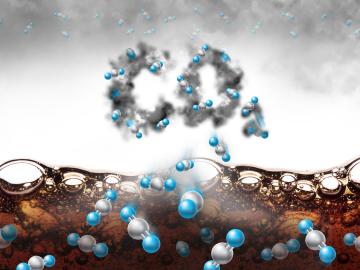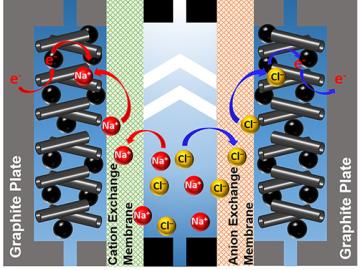
Filter News
Area of Research
- Advanced Manufacturing (5)
- Biological Systems (1)
- Biology and Environment (23)
- Computational Biology (1)
- Computational Engineering (1)
- Computer Science (2)
- Electricity and Smart Grid (2)
- Energy Science (66)
- Functional Materials for Energy (1)
- Fusion and Fission (4)
- Fusion Energy (2)
- Isotopes (2)
- Materials (51)
- Materials Characterization (1)
- Materials for Computing (10)
- Materials Under Extremes (1)
- Mathematics (1)
- National Security (9)
- Neutron Science (14)
- Nuclear Science and Technology (2)
- Quantum information Science (1)
- Sensors and Controls (1)
- Supercomputing (16)
- Transportation Systems (2)
News Type
News Topics
- (-) Bioenergy (26)
- (-) Biomedical (18)
- (-) Clean Water (14)
- (-) Critical Materials (13)
- (-) Cybersecurity (9)
- (-) Grid (28)
- (-) Materials Science (54)
- (-) Physics (11)
- (-) Security (4)
- (-) Transportation (52)
- 3-D Printing/Advanced Manufacturing (57)
- Advanced Reactors (18)
- Artificial Intelligence (33)
- Big Data (26)
- Biology (31)
- Biotechnology (6)
- Buildings (31)
- Chemical Sciences (31)
- Composites (16)
- Computer Science (70)
- Coronavirus (15)
- Emergency (2)
- Energy Storage (50)
- Environment (67)
- Exascale Computing (11)
- Fossil Energy (1)
- Frontier (10)
- Fusion (19)
- High-Performance Computing (33)
- Hydropower (6)
- Irradiation (3)
- Isotopes (15)
- ITER (5)
- Machine Learning (19)
- Materials (70)
- Mathematics (3)
- Mercury (3)
- Microscopy (21)
- Molten Salt (6)
- Nanotechnology (25)
- National Security (13)
- Neutron Science (42)
- Nuclear Energy (36)
- Partnerships (11)
- Polymers (15)
- Quantum Computing (9)
- Quantum Science (18)
- Simulation (16)
- Software (1)
- Space Exploration (11)
- Statistics (1)
- Summit (11)
Media Contacts

A team including Oak Ridge National Laboratory and University of Tennessee researchers demonstrated a novel 3D printing approach called Z-pinning that can increase the material’s strength and toughness by more than three and a half times compared to conventional additive manufacturing processes.

Using additive manufacturing, scientists experimenting with tungsten at Oak Ridge National Laboratory hope to unlock new potential of the high-performance heat-transferring material used to protect components from the plasma inside a fusion reactor. Fusion requires hydrogen isotopes to reach millions of degrees.

A new method developed at Oak Ridge National Laboratory improves the energy efficiency of a desalination process known as solar-thermal evaporation.

Oak Ridge National Laboratory has teamed with Cornell College and the University of Tennessee to study ways to repurpose waste soft drinks for carbon capture that could help cut carbon dioxide emissions.

Scientists at Oak Ridge National Laboratory studying quantum communications have discovered a more practical way to share secret messages among three parties, which could ultimately lead to better cybersecurity for the electric grid

A team of researchers at Oak Ridge National Laboratory have demonstrated that designed synthetic polymers can serve as a high-performance binding material for next-generation lithium-ion batteries.

Scientists have discovered a way to alter heat transport in thermoelectric materials, a finding that may ultimately improve energy efficiency as the materials

Scientists at Oak Ridge National Laboratory have developed a low-cost, printed, flexible sensor that can wrap around power cables to precisely monitor electrical loads from household appliances to support grid operations.

A team of scientists led by Oak Ridge National Laboratory used carbon nanotubes to improve a desalination process that attracts and removes ionic compounds such as salt from water using charged electrodes.



